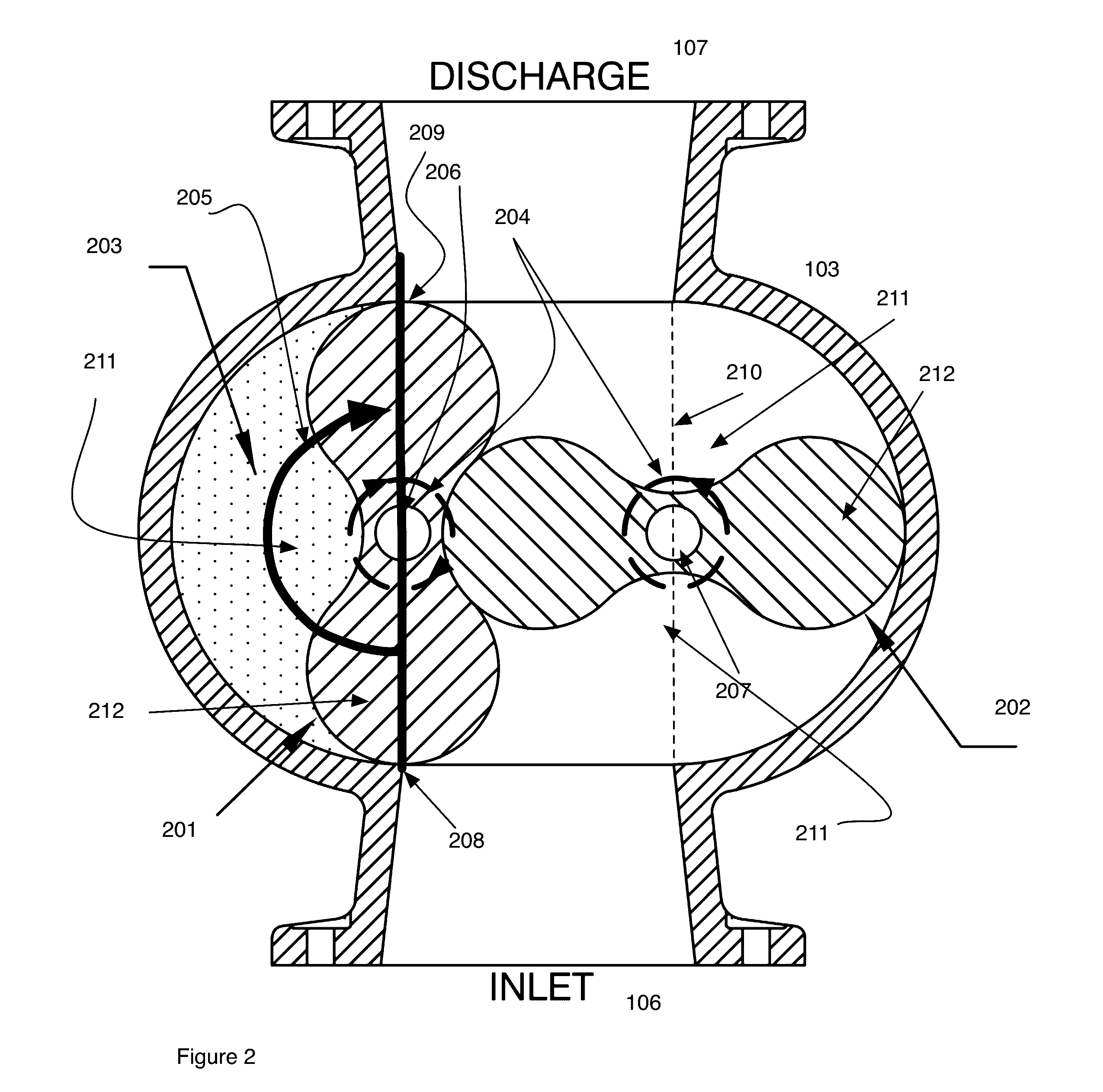Multiple Segment Lobe Pump
a multi-segment, lobe technology, applied in the direction of machines/engines, rotary/oscillating piston pump components, liquid fuel engines, etc., can solve the problems of limited wide-spread use, non-pulsating pumps are currently not manufactured, and the magnitude of pulses did not eliminate the non-continuous pump flow characteristic, etc., to reduce the flow pulsation and eliminate the cyclic variation in the total flow
- Summary
- Abstract
- Description
- Claims
- Application Information
AI Technical Summary
Benefits of technology
Problems solved by technology
Method used
Image
Examples
Embodiment Construction
[0040]To fully explain how the basic prior art lobe pump operates, and to help explain the instant invention by contrast, FIGS. 1-6 are included that show several views of a prior art lobe pump. It should be understood and apparent however that some components and descriptions are common to both the prior art pumps and embodiments of the current invention. As an example both the prior art and the current invention include housings, inlets, outlets and at least a pair of rotors. Descriptions specific to embodiments of the instant invention, for brevity, avoid repeatedly restating these common features. The pump has two side-by-side rotors, each with two identical sets of lobes. FIG. 1 illustrates the three primary exterior views of the machine. FIGS. 2-5 illustrate interior sections and components. FIG. 6 shows a measure of performance.
[0041]Referring now to FIG. 1 a typical exterior housing for pumps of both prior art design and the current invention is shown. Three views are shown ...
PUM
 Login to View More
Login to View More Abstract
Description
Claims
Application Information
 Login to View More
Login to View More - R&D
- Intellectual Property
- Life Sciences
- Materials
- Tech Scout
- Unparalleled Data Quality
- Higher Quality Content
- 60% Fewer Hallucinations
Browse by: Latest US Patents, China's latest patents, Technical Efficacy Thesaurus, Application Domain, Technology Topic, Popular Technical Reports.
© 2025 PatSnap. All rights reserved.Legal|Privacy policy|Modern Slavery Act Transparency Statement|Sitemap|About US| Contact US: help@patsnap.com



